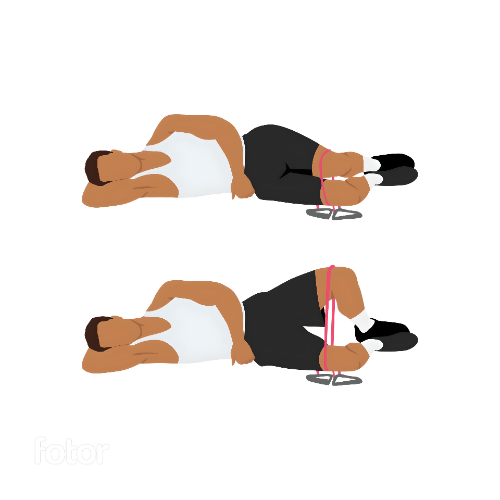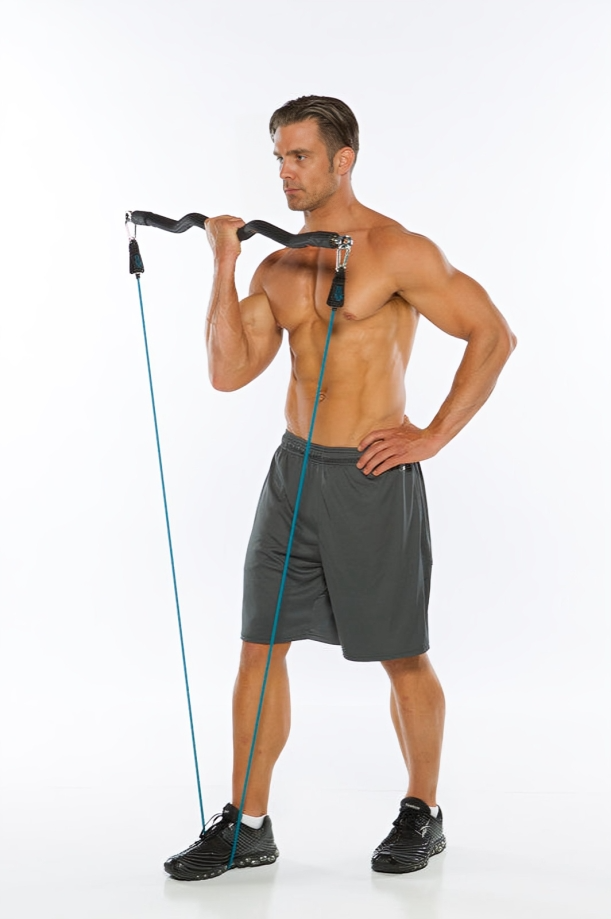+30 Full-Body Resistance Band Workout You Can Do Anywhere
Resistance bands exercises are your budget-friendly workout buddies, capable of sculpting every muscle group from head to toe. Whether you're a fitness enthusiast or just starting out, these bands can adapt to your fitness level, making them the perfect addition to your home gym. In this guide, we'll explore best resistance bands, their types, and how they can supercharge your workouts.
Overview
You can transform your lower body, chest, shoulders, arms, and core, all without the hefty gym fees or the clunky dumbbells and kettlebells. Resistance bands are like having your very own personal trainer in the comfort of your home, helping you sculpt a stronger, leaner, and healthier version of yourself.
Types and Resistance Levels
Resistance bands come in various types and resistance levels, making them suitable for all fitness levels.
Loop Bands: These are closed-loop bands, typically used for lower body exercises like squats and leg workouts.
Therapy Bands: Often used for physical therapy and rehabilitation, these bands offer gentle resistance for targeted exercises.
Exercise Bands: These are the standard, versatile bands used for a wide range of exercises.
Resistance Levels:Bands come in different resistance levels, usually color-coded to indicate their intensity. Common levels include light, medium, heavy, and extra-heavy. Select a resistance level that matches your fitness goals and current strength.
Safety Considerations and Proper Form
Safety and proper form are essential when using resistance bands to prevent injuries and maximize the effectiveness of your workouts.
Here are some key considerations:
Anchoring: Secure the band by anchoring it to a stable object or using door attachments designed for bands. Ensure it won't slip or snap during your exercises.
Proper Alignment: Maintain good posture and alignment during exercises. Keep your back straight, and avoid overextending your joints.
Gradual Progression: Start with lighter resistance bands if you're new to this equipment. As your strength improves, gradually increase resistance.
Warming Up: Always warm up before using resistance bands to prepare your muscles and reduce the risk of injury.
Full Range of Motion: Perform exercises through their full range of motion for optimal results. Avoid abrupt or jerky movements.
Resistance band exercises
1. Upper Body Exercises
This resistance band exercises is effective for building strength and toning your chest, shoulders, and arms.
Bicep Curls
Bicep curls with resistance bands mimic the classic dumbbell exercise. This exercise isolates and strengthens the bicep muscles.
How to Do It:
- Stand on the middle of the band with feet hip-width apart.
- Hold one end of the band in each hand with your palms facing forward.
- Curl your hands toward your shoulders while keeping your upper arms stationary.
- Slowly lower your hands back to the starting position.
Tricep Extensions
Tricep extensions target the back of your arms, helping to tone and define the triceps.
How to Do It:
- Stand on the band with one foot and hold the other end with one hand.
- Raise your arm overhead, keeping your elbow close to your head.
- Extend your arm fully while keeping the band stable.
- Return to the starting position.
Shoulder Press
Shoulder presses with resistance bands work your deltoid muscles, helping to build strong and defined shoulders.
How to Do It:
- Stand on the band with both feet, shoulder-width apart.
- Hold the band at shoulder height with your palms facing forward.
- Push the band overhead until your arms are fully extended.
- Lower the band back to shoulder height.
Bent-Over Rows
Bent-over rows using resistance bands work your upper back, lats, and rear deltoids, promoting better posture and back strength.
How to Do It:
- Step on the band with both feet, hip-width apart.
- Hold the band with your hands in front of your thighs.
- Bend your knees slightly and hinge at your hips, keeping your back straight.
- Pull the band towards your waist while squeezing your shoulder blades together.
- Slowly release the band to the starting position.
Lat Pulldowns
Lat pulldowns with resistance bands mimic the machine exercise and target your latissimus dorsi, improving your upper back and shoulder strength.
How to Do It:
- Secure the band overhead or use a door attachment.
- Hold the band with your hands wider than shoulder-width apart.
- Pull the band down toward your chest, engaging your lats.
- Slowly release the band back to the starting position.
Chest Press
Chest presses with resistance bands focus on your pectoral muscles, providing an effective alternative to traditional bench presses.
How to Do It:
- Step on the band with your back to the anchor point.
- Hold the band at chest height with your hands at shoulder-width.
- Push the band forward, extending your arms.
- Return to the starting position, feeling the chest muscles contract.
Face Pulls
Face pulls with resistance bands work your rear deltoids and upper traps, helping to balance out your shoulder development.
How to Do It:
- Secure the band at chest height.
- Hold the band with both hands.
- Pull the band towards your face, keeping your elbows high.
- Squeeze your shoulder blades together and then slowly release.
Seated Rows
Seated rows using resistance bands strengthen your mid-back, lats, and biceps while promoting good posture.
How to Do It:
- Sit with your legs extended and loop the band around your feet.
- Hold the band with your palms facing each other.
- Pull the band towards your torso, squeezing your shoulder blades together.
- Gradually release the band back to the starting position.
2. Lower Body Exercises
Lower body exercises with resistance bands are highly effective for building strength, stability, and flexibility in your legs and glutes.
Banded Front Squat
The banded front squat is an excellent exercise for targeting your quadriceps and enhancing your lower body strength.
How to Do It:
- Stand on the band with feet hip-width apart.
- Hold the band at shoulder height with your palms facing up.
- Perform a squat while keeping the band taut across your shoulders.
- Return to the starting position.
Kickstand Single-Leg Romanian Deadlift
This exercise works on balance and targets the hamstrings and glutes, as well as enhancing hip stability.
How to Do It:
- Place one foot on the band's center and hold the band with both hands.
- Hinge at your hips, extending one leg behind you while keeping your back straight.
- Return to the starting position.
Abduction
Abduction exercises with resistance bands target the outer thighs, helping to shape and strengthen this area.
How to Do It:
- Place the band around your ankles.
- Stand with your feet hip-width apart.
- Push your legs outward against the resistance of the band.
- Return to the starting position.
Banded Lateral Step-Out Squat
Lateral step-out squats with resistance bands work the inner and outer thighs and help improve hip stability.
How to Do It:
- Place the band around your ankles.
- Stand with your feet together.
- Step to the side while squatting down.
- Return to the starting position.
Banded Single-Leg Tempo Deadlift
Single-leg tempo deadlifts with resistance bands enhance balance, stability, and target the hamstrings and glutes.
How to Do It:
- Stand on the band with one foot and hold the other end with both hands.
- Hinge at your hips, extending one leg behind you and lowering the band towards the ground.
- Return to the starting position.
Deadlift
Deadlifts with resistance bands are a great lower body exercise for overall strength and posterior chain development.
How to Do It:
- Stand on the band with both feet.
- Hold the band with your hands in front of your thighs.
- Hinge at your hips while keeping your back straight, lowering the band toward the ground.
- Return to the starting position.
Stay-Low Curtsy Lunge
Stay-low curtsy lunges target the quads, hamstrings, and glutes while enhancing balance and coordination.
How to Do It:
- Place the band around your legs, just above your knees.
- Stand with your feet together.
- Step one foot diagonally behind you in a curtsy lunge.
- Return to the starting position.
Lateral Squat To Cross-Body Row
Lateral squats combined with a cross-body row with resistance bands provide a dynamic full-body workout, targeting the legs and upper body.
How to Do It:
- Step on the band with both feet.
- Perform a lateral squat to one side.
- While returning to the starting position, perform a cross-body row.
Banded Glute Bridge With Hip Abduction
Banded glute bridges with hip abduction enhance glute activation and hip strength.
How to Do It:
- Lie on your back with the band around your thighs.
- Lift your hips off the ground in a glute bridge.
- Open your legs while keeping the band taut.
- Lower your hips to the ground.
Hamstring Walkout
Hamstring walkouts with resistance bands target the hamstrings and help improve hamstring flexibility and strength.
How to Do It:
- Place the band around your ankles.
- Stand with your feet hip-width apart.
- Bend at your hips, keeping your legs straight.
- Walk your hands forward as far as you can, feeling the hamstring stretch.
- Walk your hands back to the starting position.
3. Core and Full-Body Exercises
Exercises that engage your core and provide full-body workouts are essential for building overall strength and functional fitness.
Russian Twists
Russian twists with resistance bands work the obliques and help improve rotational strength.
How to Do It:
- Sit on the ground with your legs extended and loop the band around your feet.
- Hold the band with both hands.
- Lean back slightly and twist your torso from side to side while holding the band.
Woodchoppers
Woodchoppers with resistance bands are excellent for targeting the obliques and improving overall core strength.
Workout Plan:
- Secure the band at chest height.
- Hold the band with both hands.
- Rotate your torso while pulling the band diagonally across your body.
Standing Oblique Crunches
Standing oblique crunches with resistance bands work the obliques and enhance balance.
Workout Plan:
- Step on the band with one foot and hold the other end with one hand.
- Bring your knee up towards your elbow while bending at the waist.
- Return to the starting position.
- (Continue with the remaining core and full-body exercises, D to J, following a similar structure for each.)
Lateral Raise
Lateral raises with resistance bands target the shoulder muscles, enhancing shoulder strength and stability.
Workout Plan:
- Step on the band with both feet.
- Hold the band at your sides with your palms facing your body.
- Raise your arms out to the sides until they are parallel to the ground.
- Lower them back to your sides.
Jack With Overhead Press
Jacks with overhead presses are a dynamic exercise that engages the entire body, including the shoulders, chest, and legs.
Workout Plan:
- Stand on the band with both feet.
- Hold the band at your sides with your palms facing forward.
- Jump your feet out while simultaneously pressing the band overhead.
- Return to the starting position.
Glute Bridges
Glute bridges with resistance bands primarily target the glute muscles while engaging the core and hamstrings.
Workout Plan:
- Lie on your back with the band around your thighs.
- Lift your hips off the ground in a bridge position.
- Squeeze your glutes at the top of the movement.
Clamshell
Clamshells with resistance bands focus on the gluteus medius and help with hip stability.
Workout Plan:
- Place the band around your thighs, just above your knees.
- Lie on your side with your legs bent at a 90-degree angle.
- Lift the top knee while keeping your feet together.
Lying 'V' Tap
Lying 'V' taps with resistance bands work the lower abs and help enhance core strength.
Workout Plan:
- Lie on your back with the band around your feet.
- Lift your legs toward the ceiling, forming a 'V.'
- Tap the band with your feet, keeping your lower back pressed into the ground.
Bicycle Crunch
Bicycle crunches with resistance bands are a fantastic core exercise, working both the upper and lower abdominals.
Workout Plan:
- Lie on your back with the band around your feet.
- Lift your shoulders off the ground and perform a bicycle pedaling motion.
Hollow Body Hold To Crunch
Hollow body holds with a transition to a crunch engage the entire core, helping to build strength and stability.
Workout Plan:
- Lie on your back with the band around your feet.
- Lift your head and shoulders off the ground while extending your legs.
- Transition into a crunch by pulling your knees toward your chest.
4. Sample Workouts
To help you get started with resistance band exercises, here are some sample workout routines that cater to different fitness levels and goals.
Beginner's Full-Body Routine
This beginner's workout routine covers a variety of exercises to provide a full-body workout. It's perfect for those new to resistance bands.
Workout Plan:
- Banded Front Squat - 3 sets of 10 reps
- Russian Twists - 3 sets of 12 reps (each side)
- Banded Glute Bridge With Hip Abduction - 3 sets of 12 reps
- Abduction - 3 sets of 12 reps
- Standing Oblique Crunches - 3 sets of 12 reps (each side)
Perform each exercise with proper form, and take a 30-60 second rest between sets.
Advanced Upper Body Circuit
This advanced circuit focuses on upper body strength and endurance.
Workout Plan:
- Lat Pulldowns - 4 sets of 12 reps
- Face Pulls - 4 sets of 15 reps
- Tricep Extensions - 4 sets of 10 reps
- Lateral Raise - 4 sets of 12 reps
Perform these exercises in a circuit, with minimal rest between exercises. After completing all exercises, rest for 1-2 minutes and repeat for a total of 3 rounds.
Core-Strengthening Sequence
This sequence targets your core muscles and enhances stability and balance.
Workout Plan:
- Bicycle Crunch - 3 sets of 15 reps (each side)
- Woodchoppers - 3 sets of 10 reps (each side)
- Hollow Body Hold To Crunch - 3 sets of 10 reps
- Clamshell - 3 sets of 15 reps (each side)
Tips for Success
To make the most of your resistance band workouts and ensure progress, consider these essential tips:
Proper Warm-Up and Cooldown
Warm-Up: Prior to your resistance band workout, engage in a 5-10 minute warm-up. This can include light cardio, dynamic stretching, or mobility exercises to prepare your muscles and joints for the workout.
Cooldown: After your workout, allocate 5-10 minutes for a cooldown. Perform static stretches targeting the muscle groups you worked during the session. This helps reduce muscle soreness and improve flexibility.
Progression and Variations
Progression: As you become comfortable with your resistance band exercises, gradually increase the resistance level or the number of repetitions and sets. This progressive overload is essential for continued improvement.
Variations: Explore different variations of resistance band exercises to keep your workouts engaging. Adjust angles, grips, or stances to target muscles from new angles and prevent plateaus.
Setting Goals and Tracking Progress
Clear Goals: Define specific fitness goals that you want to achieve with resistance band training. Whether it's strength, muscle growth, or improved flexibility, having clear objectives will keep you motivated.
Progress Tracking: Keep a workout journal or use a fitness app to track your workouts, including exercise selection, sets, repetitions, and resistance levels. This allows you to monitor your progress and make informed adjustments to your routine.
Celebrate Milestones: Celebrate your achievements along the way. Recognizing milestones, such as lifting heavier resistance bands or achieving specific fitness goals, provides positive reinforcement.
Summary
Resistance band exercises offer a wide range of benefits that can transform your fitness routine. From improved strength to increased flexibility, the advantages are undeniable. These versatile tools can be used at home or in the gym, making them accessible to all.

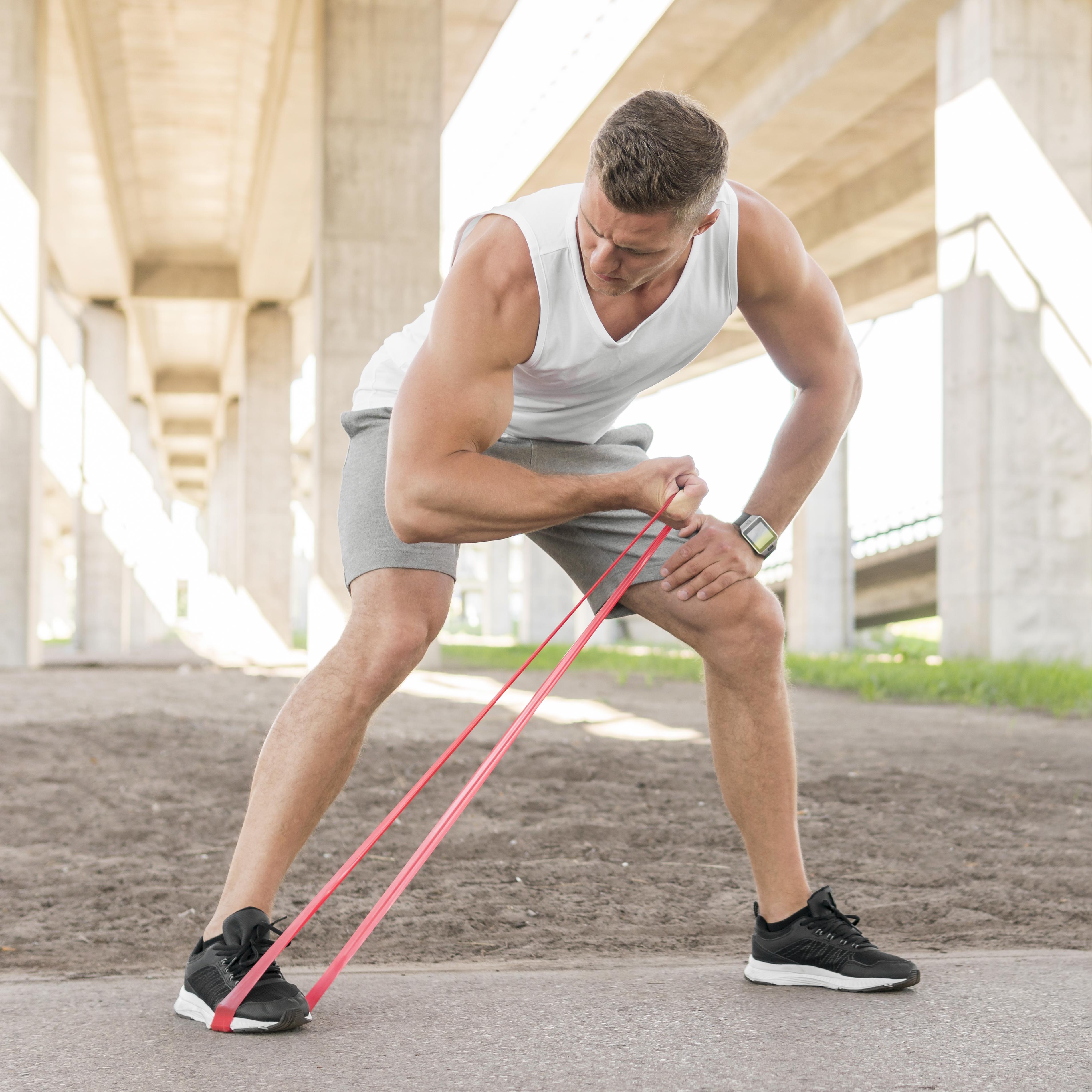
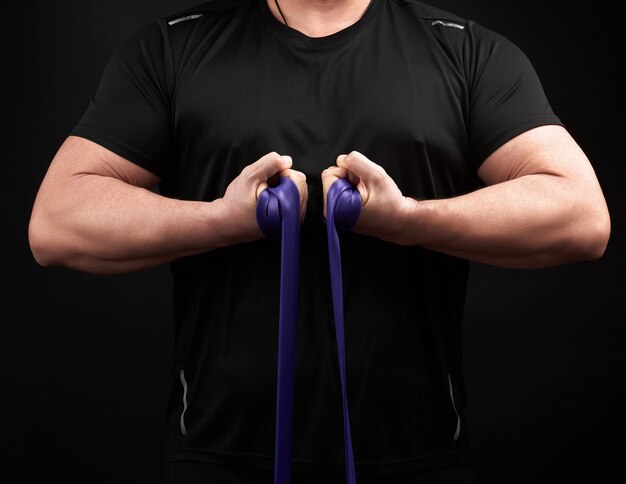



.png)



.png)





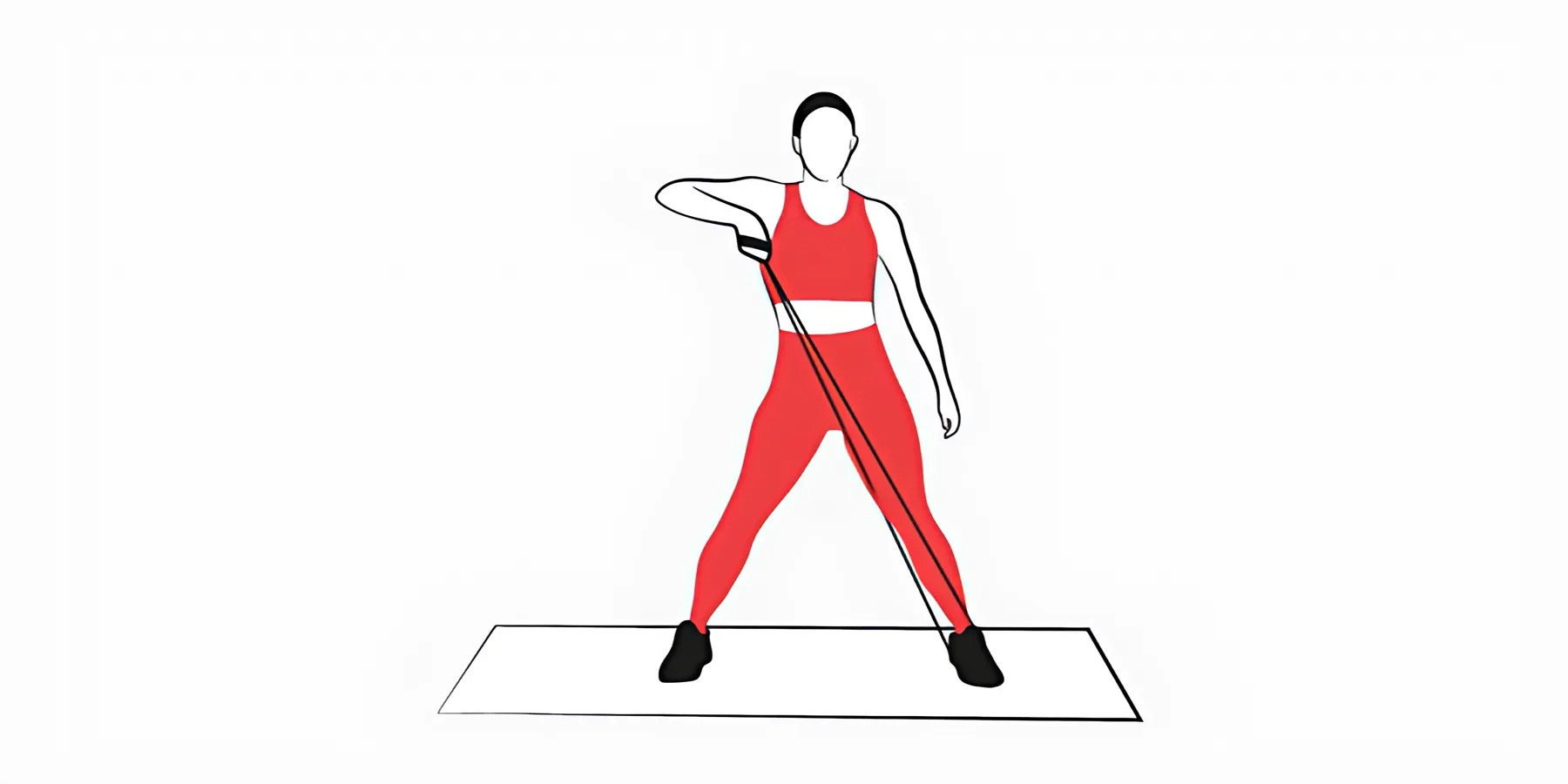
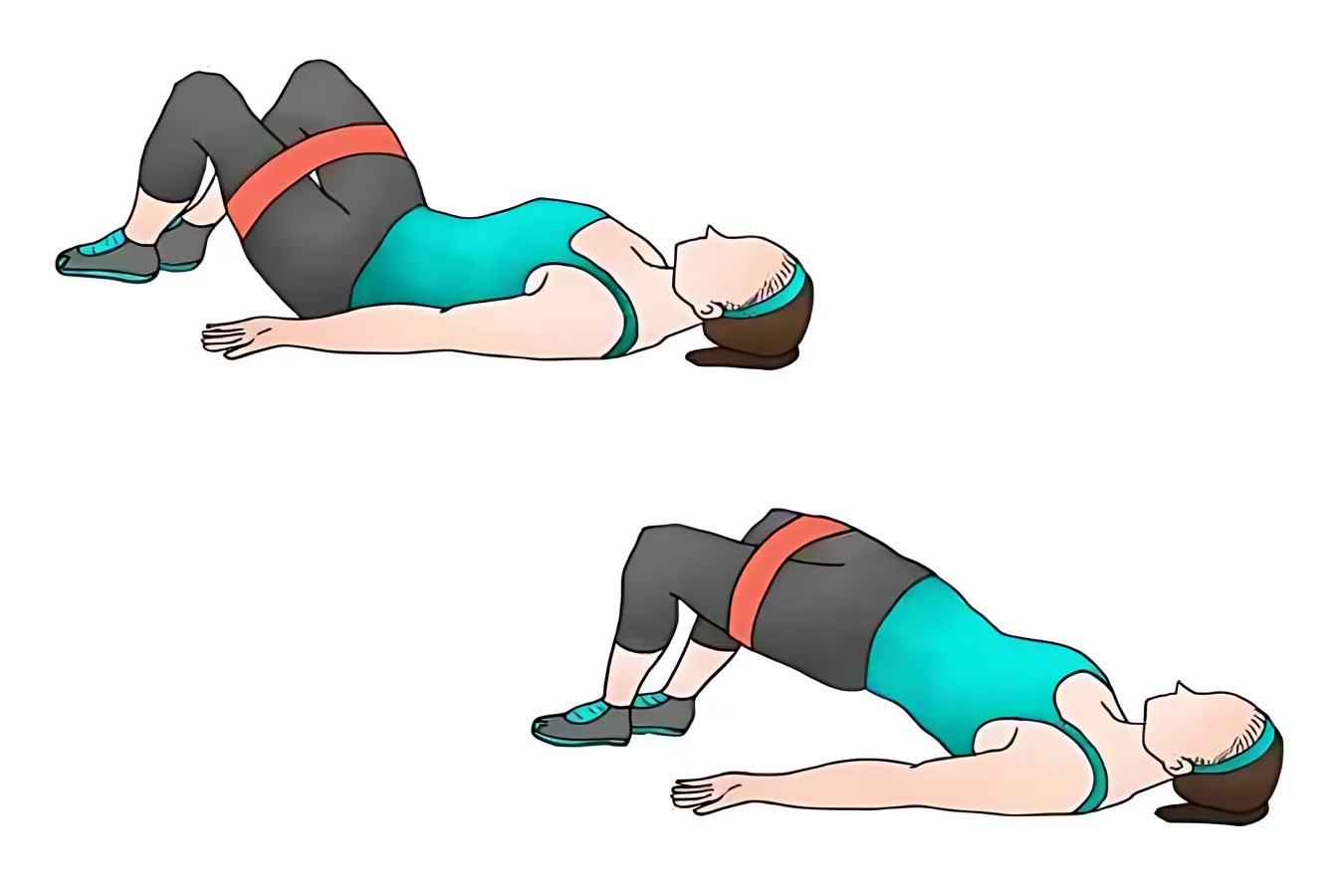






.jpg)
.jpg)
